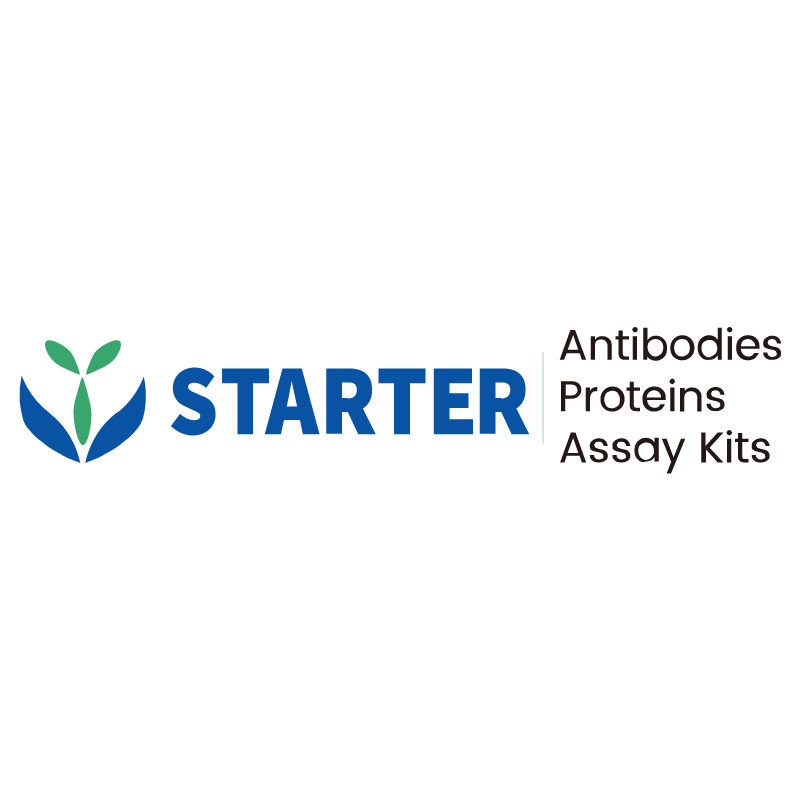WB result of ASGR2 Recombinant Rabbit mAb
Primary antibody: ASGR2 Recombinant Rabbit mAb at 1/1000 dilution
Lane 1: HepG2 whole cell lysate 20 µg
Secondary antibody: Goat Anti-rabbit IgG, (H+L), HRP conjugated at 1/10000 dilution
Predicted MW: 35 kDa
Observed MW: 50 kDa
Product Details
Product Details
Product Specification
| Host | Rabbit |
| Antigen | ASGR2 |
| Synonyms | Asialoglycoprotein receptor 2; ASGP-R 2; ASGPR 2; C-type lectin domain family 4 member H2; Hepatic lectin H2 (HL-2); CLEC4H2 |
| Immunogen | Synthetic Peptide |
| Location | Membrane |
| Accession | P07307 |
| Clone Number | SDT-2059-47 |
| Antibody Type | Recombinant mAb |
| Isotype | IgG |
| Application | WB, IHC-P |
| Reactivity | Hu |
| Positive Sample | HepG2, human hepatocellular carcinoma, human liver |
| Predicted Reactivity | / |
| Purification | Protein A |
| Concentration | 0.5 mg/ml |
| Conjugation | Unconjugated |
| Physical Appearance | Liquid |
| Storage Buffer | PBS, 40% Glycerol, 0.05% BSA, 0.03% Proclin 300 |
| Stability & Storage | 12 months from date of receipt / reconstitution, -20 °C as supplied |
Dilution
| application | dilution | species |
| WB | 1:1000 | Hu |
| IHC-P | 1:250 | Hu |
Background
The ASGR2 protein (Asialoglycoprotein Receptor Subtype 2) is a type II transmembrane receptor primarily expressed on the surface of hepatocytes and belongs to the C-type lectin superfamily. It forms hetero-oligomeric complexes with ASGR1, mediating the endocytosis and lysosomal degradation of desialylated glycoproteins in the bloodstream by recognizing terminal galactose or N-acetylgalactosamine residues. This process plays a critical role in maintaining glycoprotein homeostasis and regulating cholesterol metabolism. ASGR2 exhibits liver-specific high expression, featuring a calcium-dependent carbohydrate-recognition domain (CRD) in its extracellular region. Recent studies have identified the ASGR signaling pathway's involvement in lipid metabolism disorders, liver fibrosis, and hepatocellular carcinoma progression. Targeted therapies (e.g., ASGR1/2 inhibitors) show potential for cholesterol-lowering treatments, possibly by modulating the PCSK9/LDLR pathway. Additionally, ASGR2 is utilized in designing liver-targeted drug delivery systems, leveraging its efficient internalization capacity to enhance liver-specific accumulation of therapeutic molecules.
Picture
Picture
Western Blot
Immunohistochemistry
IHC shows positive staining in paraffin-embedded human hepatocellular carcinoma. Anti-ASGR2 antibody was used at 1/250 dilution, followed by a HRP Polymer for Mouse & Rabbit IgG (ready to use). Counterstained with hematoxylin. Heat mediated antigen retrieval with Tris/EDTA buffer pH9.0 was performed before commencing with IHC staining protocol.
Negative control: IHC shows negative staining in paraffin-embedded human cervix cancer. Anti-ASGR2 antibody was used at 1/250 dilution, followed by a HRP Polymer for Mouse & Rabbit IgG (ready to use). Counterstained with hematoxylin. Heat mediated antigen retrieval with Tris/EDTA buffer pH9.0 was performed before commencing with IHC staining protocol.
IHC shows positive staining in paraffin-embedded human liver. Anti-ASGR2 antibody was used at 1/250 dilution, followed by a HRP Polymer for Mouse & Rabbit IgG (ready to use). Counterstained with hematoxylin. Heat mediated antigen retrieval with Tris/EDTA buffer pH9.0 was performed before commencing with IHC staining protocol.
Expression Atlas
Expression of ASGR2 in tumor tissue.
Expression of ASGR2 in human tissue.


